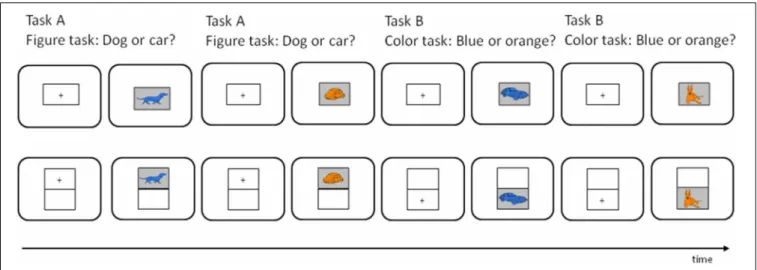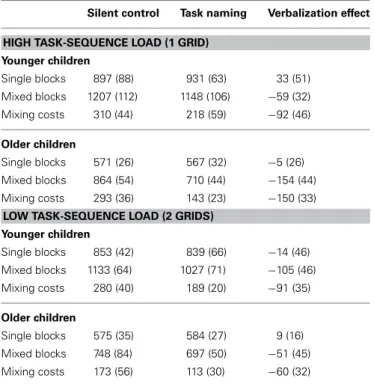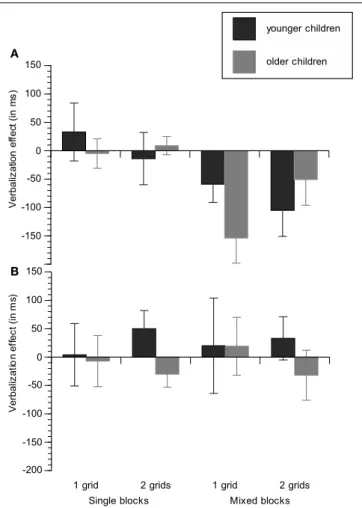Developmental changes in using verbal self-cueing in task-switching situations: the impact of task practice and task-sequencing demands
Texte intégral
Figure




Documents relatifs
The teacher explores topic with the class, helps students to understand instructions and prepare. TASK CYCLE
By studying learning as a continuous process, we were able to demonstrate that a continuous process, we were able to demonstrate that learning rate is the result of a match
on the decision to delegate the task management to OpenMP, the task granularity is en- forced to reach high performance, while the task submission order is a consequence of the need
Figure1: Box plots representing maximum amplitude percentage (MA%) in children with reported motor problems (grey boxes) and age-matched typically developing children (white
In order to gain a deeper understanding of how age-related differences in strategy execution are modulated by variations of task difficulty, the next set of analyses focused on the
In neuropsychology, the assessment of spatial cognition can be performed through plenty of tasks, as described by Cerrato and colleagues [7].One example is rep- resented by The
Table 3 (exact matching) and the table 4 (partial matching) show the results obtained by the participants in the disability recognition task for both, Spanish (a) and English
Reactive control seems relatively preserved in aging (Braver, 2012), but brain-imaging data suggest that reactive control is associated with an increase in transient activation